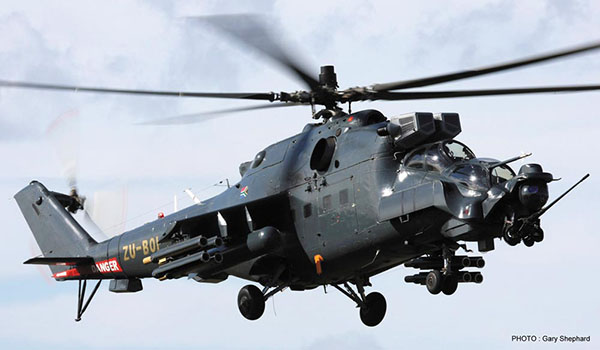
Hasegawa 1/72 Mi-24/35 Mk.III Superhind
By Chris Banyai-Riepl
Overview
The Mil Mi-24 Hind family has a long and storied history as the premier attack helicopter of the Soviet Union/Russia and its allies for decades. The sturdiness of the airframe has kept it at the forefront of military forces around the world, and has even brought out third party upgrades and improvements. Such an example is the Superhind, a modernized Mi-24V done by ATE out of South Africa. This modification program started in 1999 and saw changes in weight and center of gravity to improve performance, new armament and an uprated cockpit, as well as Kevlar armor and a Doppler navigation system. Sales are slow so far, but interest has been expressed by several nations that are seeing their Hind fleets ageing without a clear replacement. This situation makes the Superhind a very attractive option.
The Kit
Hasegawa's 1/72 Mi-24 kit has been out for 30 years now, so it is definitely showing its age. Still, it does feature recessed panel lines, a simple interior, and a collection of troops for the interior. To make the Superhind, this release features quite a few gray resin details to convert the airframe into the Mi-35 Mk.III Superhind
. The decal sheet provides markings for two options.
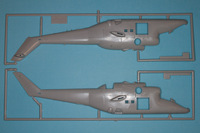
|
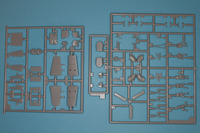
|
Starting with the original kit construction, this is pretty basic and straightforward. The cockpit is very simple, with seats, instrument panels, and control columns being about all you get. Decals make up the details, and for those who want to go all out here, you will want to pick up an aftermarket set. That said, for the Superhind, there are undoubtedly cockpit differences that are not necessarily picked up in your standard Mi-24 set, so be ready to make some changes as needed.
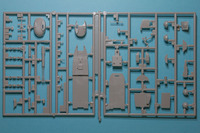
|
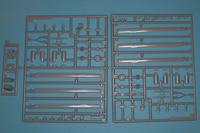
|
With the interior done, the fuselage assembly is next, and that's also a fairly simple bit to take care of. There are some complex shapes to the fuselage, though, necessitating some additional parts around the engine intakes. The chin also has some extra bits to build up the unique shape around the gun area. The landing gear is basic but sturdy, and the wheel doors help hide any lack of detailing in the wheel wells. The rotor actually has a fair amount of detailing in it, with separate actuator arms and a multi-piece center shaft assembly.
The real changes, though, come from the resin upgrades. For this you get engine intake screens that are used on one of the decal options (the other uses the standard round bulb intake faces). The entire nose gets a bunch of resin reworking bits, from the optical sensor ball to the new cannon (provided as a metal barrel no less) to the new under-fuselage piece that also incorporates additional side assemblies. There are also additional bumps and fairings, all of which are given very clear instructions as to their exact placement.
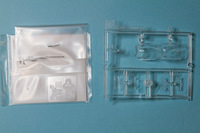
|
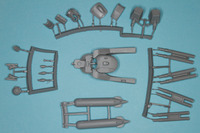
|
In addition to all the conversion parts, the kit also includes a whole new set of armament for the stub wings. There are two new fuel tanks and new outboard rocket launch tubes. The latter are set up in a four-tube arrangement and include a new pylon as well as the rocket tubes. Finally, there are some additional rear fuselage details that round out the assembly.
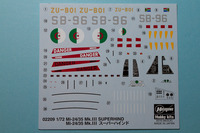
|
For decal options, there are two: one boring and one interesting (at least in my opinion). The first one is an overall black helicopter that is the development version, and thus given the South African civil code "ZU-BOI". This one has the larger intake screens and at least is simple to paint, being overall one color. The second option is an operational example from the Algerian Air Force, coded SB-96. This one is camouflaged in a two-tone scheme consisting of a light sand brown and a dark gray. This, coupled with the colorful Algerian national markings, makes this one the much more interesting one of the two options. Aside from the individual markings, the decals also include a handful of stencil markings.
Conclusion
While the parent kit is definitely showing its age, the addition of resin detail bits to update this Hind into a Superhind makes for a nice addition. As more nations look at the Superhind as a potential upgrade, this kit will become more valuable in terms of marking potential. My thanks to Hasegawa USA for the review copy.
